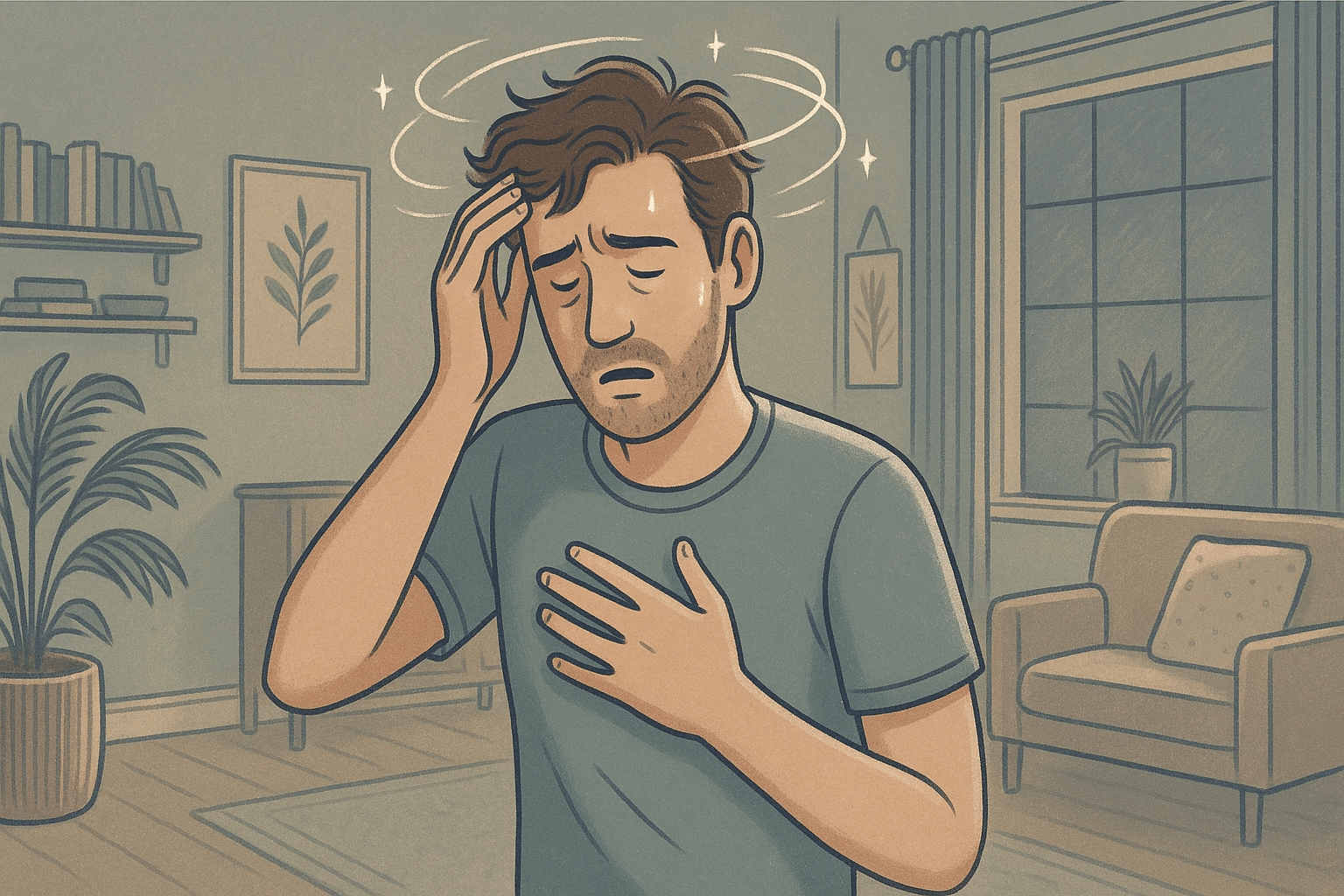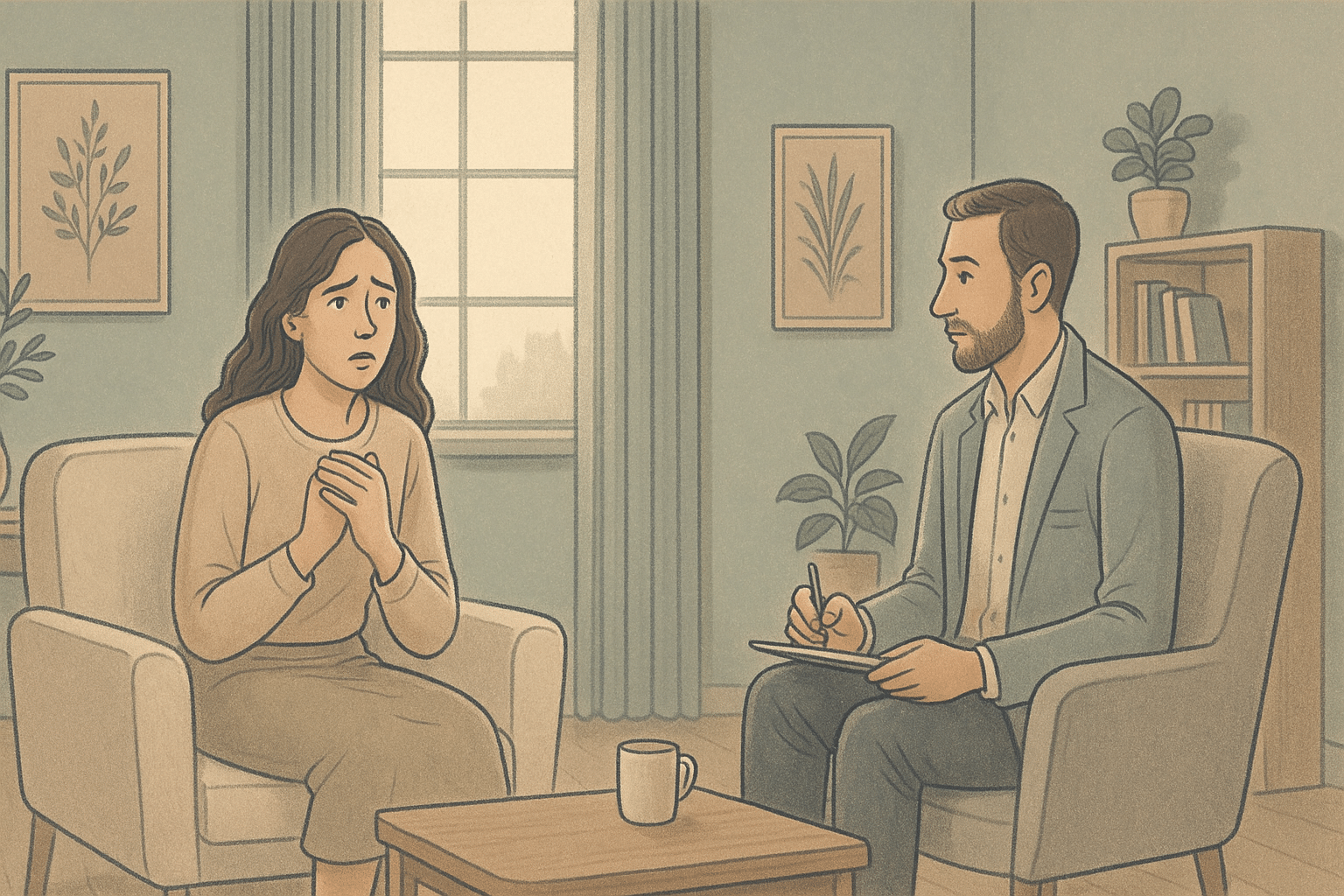Key Takeaways
- Switching in DID involves distinct changes in consciousness as different alters take control, often accompanied by memory gaps and emotional shifts.
- Internal signs of switching include memory blanks, unfamiliar thoughts, emotional changes, lost time, and feelings of disorientation.
- External signs that others might notice include changes in voice, different skill levels, posture shifts, handwriting variations, and preference changes.
- Tracking switches with journals or technology can help identify patterns and triggers, leading to better symptom management
- A Mission for Michael provides specialized trauma-informed treatment for DID. We use integrated approaches including phase-oriented trauma therapy, internal family systems work, and EMDR to help improve communication between alters and develop effective treatment strategies.
What Is Switching in DID?
Switching refers to the process of transitioning between different identity states or alters within a DID system. This transition can happen suddenly or gradually, depending on various factors including stress levels, triggers, and the overall health of your internal system. Unlike the dramatic portrayals in media, most switches are subtle and may go unnoticed by those around you, and sometimes even by yourself.
Different Alters Take Control
In DID, each alter has their own unique characteristics, memories, behaviors, and sometimes even physiological responses. When a switch occurs, control of consciousness transfers from one alter to another. This shift happens as a protective mechanism developed in response to trauma, allowing different parts of the self to handle situations that might be overwhelming for other parts.
Why Switches Happen
Switches typically occur for specific reasons, though they aren’t always within conscious control. They often happen in response to triggers; situations, emotions, or sensory experiences that remind the system of past trauma.
However, switches can also happen due to everyday stressors, when specific skills are needed, or when the current alter becomes exhausted. Understanding why and when you switch is valuable information that can help you develop greater internal communication and stability over time.
| A Mission For Michael: Expert Mental Health Care Founded in 2010, A Mission For Michael (AMFM) offers specialized mental health care across Southern California, Minnesota, and Virginia. Our accredited facilities provide residential and outpatient programs, utilizing evidence-based therapies such as CBT, DBT, and EMDR. Our dedicated team of licensed professionals ensures every client receives the best care possible, supported by accreditations from The Joint Commission and the California Department of Health Care Services. We are committed to safety and personalized treatment plans. Start your recovery journey with AMFM today! |
Signs 1–5: Internal Signs of Switching
1. Memory Gaps

One of the most common internal signs of switching is experiencing gaps in your memory.
You might find yourself in a location with no recollection of how you got there, or discover that hours have passed without your awareness. These memory gaps occur because different alters hold different memories, and when one takes over, you may not have access to what happened while another alter was in control. Memory gaps can range from minor (forgetting a brief conversation) to significant (losing days or weeks of time).
2. Unfamiliar Thoughts
You might suddenly have thoughts that don’t feel like your own or that contradict what you believe you were just thinking. These thoughts may have a different “voice” or quality to them, as though someone else is commenting on your experiences or directing your actions. Sometimes these thoughts might feel like they’re coming from a specific location in your head, or they might have emotional qualities that feel foreign to your current state.
3. Posture Shifts
When different alters take control, your physical posture may change noticeably. Some alters might stand taller and more confidently, while others may appear hunched or protective of their body. These changes reflect the unique body image and physical comfort level of each alter.
These postural changes are often unconscious but can be significant indicators of switching. For example, a protector alter might take a wider stance with arms crossed, while a child alter might curl up or fidget. Family members or close friends may notice these shifts before you do, especially if they occur alongside other external signs.
4. Handwriting Changes
Handwriting variations between alters can be striking and represent one of the more documented physical signs of switching in DID. Different alters may write with varying pressure, slant, size, and even dominant hand preference.
Some may use cursive while others print, or there might be differences in spelling ability and signature style. These variations aren’t conscious attempts to write differently, they genuinely reflect how each alter interfaces with fine motor skills.
5. Preference Changes

Sudden shifts in food preferences, music taste, clothing choices, or activity interests can signal that a switch has occurred.
You might find yourself inexplicably drawn to foods you normally dislike, or feeling uncomfortable in clothing you typically wear. These preference changes happen because different alters have their own likes and dislikes, which may be dramatically different from each other.
Some individuals with DID report finding receipts for purchases they don’t remember making, or discovering new items in their home that appeal to a different alter’s tastes.
Signs 6–8: Psychological Signals of Switching
6. Identity Confusion
A sudden sense of uncertainty about who you are, your beliefs, or your personal history. You might feel disconnected from your usual sense of self or question thoughts and behaviors that don’t align with your typical personality. This confusion occurs as different alters with distinct identities, values, and self-concepts take control.
7. Emotional Fluctuations
Rapid, unexplained changes in emotional state that feel disconnected from your current circumstances. You might suddenly feel intense emotions (anger, sadness, fear) that don’t match your situation, or experience emotional numbness when you’d normally feel engaged. These shifts reflect the different emotional responses and trauma histories of various alters.
8. Internal Dialogue or Voices
Hearing distinct internal voices, conversations, or commentary that feel separate from your own thoughts. These might include alters communicating with each other, offering different perspectives, or providing running commentary on situations.
Unlike external auditory hallucinations, these voices originate from within and represent the internal communication system between different parts of the personality.
Signs 9 and 10: Physical Symptoms
9. Headaches
Headaches or pressure sensations in the head are commonly reported during or before switching. These may range from mild discomfort to severe pain, often concentrated in specific areas like the temples or behind the eyes.
Some people describe the sensation as a “switching headache” with a distinctive quality that differs from ordinary tension or migraine headaches. These headaches typically resolve once the switch is complete, though they may persist if the system is rapidly switching between multiple alters.
10. Body Sensations

Many people with DID experience distinctive physical sensations when switching occurs.
Physical sensations like dizziness, lightheadedness, tingling sensations (particularly in the extremities), temperature changes, or a feeling of floating or disconnection from the body can be signs a switch is about to occur.
Visual disturbances are also common, including blurred vision, tunnel vision, or momentarily seeing through a “veil” or filter. These sensations can be disorienting but typically last only briefly during the actual switch.
Understanding these physical symptoms can help you develop greater awareness of your switching patterns. Many people with DID find it helpful to create a personalized list of their unique physical signs. Tracking these physical symptoms alongside psychological changes can provide valuable insights for both you and your treatment team.
Common Switch Triggers
Stress Responses
High-stress situations frequently trigger switches as the brain attempts to bring forward the alter best equipped to handle the stressor. Work deadlines, financial pressures, or interpersonal conflicts might activate an adult alter focused on problem-solving. Alternatively, overwhelming stress might trigger a protective alter if the system perceives danger.
Even positive stress, like excitement about a special event or being put on the spot in a social situation, can trigger switches. Your internal system is constantly evaluating which alter can best manage the current circumstances, and switches occur as part of this adaptive response.
Trauma Reminders
Reminders of past trauma, whether obvious or subtle, are powerful switch triggers for most people with DID. These reminders might include anniversary dates, locations, sensory experiences (smells, sounds, physical sensations), or interactions that echo past traumatic relationships.
When encountered, these triggers can quickly activate the alters who hold the traumatic memories or who developed to protect against similar situations.
Emotional Overwhelm
Strong emotions of any kind can trigger switches, particularly if certain alters specialize in handling specific emotional states. For example, intense anger might trigger a protector alter, while deep sadness might bring forward an emotional processing part. Some systems have alters specifically designed to contain or express certain emotions that were dangerous or forbidden in the person’s developmental environment.
Emotional triggers can be particularly challenging because they often operate below the level of conscious awareness. You might switch before you’re even fully aware that an emotional response is building. This is why emotional regulation skills are a central focus in DID treatment.
Learning to recognize your emotional states before they reach overwhelming intensity can help reduce unexpected switches and build greater continuity of consciousness.
Tracking Your Switches
Developing awareness of your switching patterns is a powerful step toward healing. Many people with DID find it helpful to track when switches occur, what triggered them, which alters came forward, and what happened during those times. This information can reveal patterns you might not otherwise notice and help you develop strategies for managing switches more effectively.
Simple tracking methods include keeping a daily journal, using a specialized DID tracking app, or creating a system calendar. Some people use color coding or symbols to represent different alters, making it easier to visualize patterns over time.
Getting Support

Living with DID can feel isolating, but you don’t have to manage it alone. Professional support from therapists who specialize in dissociative disorders is invaluable.
When To See a Doctor
If you’re experiencing memory gaps, hearing internal voices, finding evidence of activities you don’t remember doing, or being told by others that your behavior and presentation change dramatically at times, seek professional help. These symptoms don’t necessarily mean you have DID, but they warrant evaluation by a mental health professional with experience in dissociative disorders.
It’s particularly important to seek help if switches are causing distress, interfering with daily functioning, or resulting in safety concerns. While switching itself is a protective mechanism, it can sometimes lead to challenging situations when different alters have conflicting goals or when amnesia between alters creates complications in your work or relationships. Early intervention can help develop greater system cooperation and communication.
Treatment Options
The treatment of DID focuses on improving communication and cooperation between alters, processing traumatic memories, and developing skills for managing switches. Unlike some mental health conditions, medication is not the primary treatment for DID, though it may help manage co-occurring symptoms like depression or anxiety.
Effective therapy for DID takes time and requires a strong therapeutic relationship built on trust. The goal isn’t to “get rid of” alters but to help the internal system function more collaboratively and reduce the amnesia barriers that disrupt daily life. Many people with DID eventually achieve either integration (where alters blend together) or peaceful coexistence (where alters remain distinct but work together harmoniously).
Professional DID Treatment and Support at AMFM
At A Mission For Michael, we understand that DID switching can feel overwhelming and confusing. Our specialized clinical teams have extensive experience working with dissociative disorders, providing trauma-informed treatment that honors the protective function of your internal system while promoting healing and integration.

We recognize that each person’s switching patterns are unique, and provide individualized treatment approaches in our modern facilities to address your specific needs and triggers.
Our comprehensive treatment model combines evidence-based therapies including phase-oriented trauma therapy, internal family systems work, and EMDR to help improve communication between alters and reduce disruptive amnesia barriers. Rather than viewing alters as problems to eliminate, we support healthy system cooperation and communication that allows for better daily functioning.
Don’t manage DID alone. Contact A Mission For Michael today to begin your journey toward understanding, managing, and healing from dissociative symptoms in a safe, supportive environment designed specifically for trauma survivors.
Frequently Asked Questions
How can I tell if I’ve switched between alters?
Common signs include finding yourself in unfamiliar locations without memory of how you got there, discovering evidence of activities you don’t remember doing, experiencing sudden changes in preferences or skills, and noticing physical symptoms like headaches or disorientation. You might also hear from others that your voice, posture, or behavior changed dramatically during certain periods.
Can people with DID control when they switch?
Control over switching varies greatly and often improves with treatment. Initially, switches typically happen involuntarily in response to triggers or stress. However, with therapeutic work, many people develop the ability to influence switching through techniques like grounding exercises, mindfulness practices, and improved internal communication between alters.
Are switches in DID always dramatic and obvious?
No, most switches are actually subtle and may go unnoticed by observers and sometimes even by the person experiencing them. Unlike dramatic media portrayals, real switching often involves gradual transitions that might only be noticeable through careful observation of behavioral patterns, preferences, or subtle changes in mannerisms.
How long do switches typically last in DID?
Switch duration varies enormously, from brief moments to days, weeks, or even months. Some alters may come forward only briefly to handle specific situations, while others might manage daily life for extended periods. The duration depends on factors like the system’s structure, current stressors, environmental safety, and the specific role of the alter.
How does AMFM help people manage switching in DID?
At A Mission For Michael, we provide comprehensive trauma-informed treatment that focuses on improving communication between alters, processing traumatic memories, and developing practical switching management skills. Our integrated approach includes phase-oriented trauma therapy, internal family systems work, and EMDR, helping individuals achieve greater system cooperation and reduced amnesia barriers.






